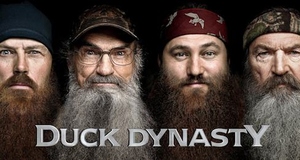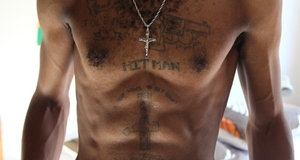In Treatment: The Casting and Bracketing of Repulsion in The Sopranos
By
2013, Vol. 5 No. 08 | pg. 4/4 | « The comparison between the two shows was a lost match for Falcone and its supposed new representation of the mob genre. The two series had two different approaches to the Mafia world. The CBS series privileged the law and the Justice system over the criminal, while The Sopranos sided and glorified the criminal (Jaramillo, 68). In addition, in Chase’s series the law is always corrupted. In the last episode even unbribable FBI Special Agent Dwight Harris (Matt Servitto) helps Tony find fugitive Phil Leotardo (Frank Vincent), captain of the Lupertazzi crime family. The information leads to Leotardo’s death. Therefore, the hypothesis that Falcone could be innovative in the Mafia TV genre and/or comparable to The Sopranos is questionable, also because there are not enough primary sources to claim that such a TV genre ever existed. Undoubtedly, The Sopranos overshadowed Falcone and sanctioned its demise to suggest that any pre-2007 repurposing of The Sopranos was risky business. In 2008, it was a different story. HBO ventured into a similar risky business, but this time with opposite results. The business turned to be profitable because it adopted Chase’s strategy. HBO repurposed The Sopranos formula as Chase repurposed his past professional work. Chase’s original plan for The Sopranos was to have “the whole series be told by Tony in flashbacks in Melfi’s office. About half of the pilot does make use of such a narrative technique, but the idea did not survive the pilot.”10 The audience was not ready for TV boldness, even though the idea of having gangsters seek therapy was not new either on TV or in cinema. Up to that point, in both media, writers and directors adopted a comic approach (Wynn, 128). Psychotherapy on screen was not taken seriously yet and it was associated specifically with sit-coms and comedies. On television network, sit-coms such as CBS Bob Newhart Show (1972-1978), NBC Frasier (1993-2004), CBS Everybody Loves Raymond (1996-2005), The WB (and then, The CW) Reba (2001-2007), etc., poked fun of the therapeutic process in their plots deeming it shameful and embarrassing. The Sopranos was certainly a breakthrough, a serious approach to the treatment of mental issues on screen in a text that was not entirely comedic. But in 2008, writer and director Robert Garcia explored the therapeutic process even further. He created and produced for HBO the drama TV series In Treatment (2008-2010), three seasons that included one hundred and twenty-one episodes, without resorting to humor. In this case, psychotherapy on screen had become an entirely serious topic. Garcia, who directed All Happy Families a 2004 episode of The Sopranos, was familiar with Chase’s original narrative technique. Then, the comparison between the narrative structure of In Treatment and Chase’s initial idea is legitimate, even though the new series is an adaptation of the Israeli Betipul (2005-Present). Garcia adapted this new series around psychotherapist Paul Weston (Gabriel Byrne) in a way that the repurposing and developing of the therapeutic relationship that Dr. Melfi and Tony shared could produce for HBO a success of a different nature, the same project that Chase pursued with The Sopranos. Obviously, in this case, the gender roles and power of the therapists are reversed. On one hand, there is a female psychiatrist, on the other a male psychotherapy. They are addressed in different ways, by her professional title--Dr. Melfi, and by his first name--Paul. Both have a clinical supervisor, Dr. Elliot Kupferberg (Peter Bogdanovich) for her and Dr. Gina Toll (Dianne Wiest) for him. Dr. Melfi welcomes his patients in her cold, sterile, and neat office, while Paul meets the patients in his comfortable and homey studio.Almost every 30-minute episode, which takes place inside of Paul’s studio, apart for a few exceptions, portrays the session of a different patient. During the first season Paul meets with Laura (Melissa George) on Monday at 9:00AM, Navy pilot Alex (Blair Underwood) on Tuesday at 10:00AM, young gymnast Sophie (Mia Wasikowska) on Wednesday at 4:00PM, Jake (Josh Charles) and Amy (Embeth Davidtz) on Thursday at 5:00PM, and meets with Gina, his former clinical supervisor on Friday at 7:00PM. Each episode of the show “capture[d] the actual ‘feel’ of a long term-therapy,” while the supposed long-term therapy in The Sopranos was extremely erratic and inconsistent, but inspiring (Fauer, 13). Then, what do The Sopranos and In Treatment have in common to argue that Chase’s series might have had a role in the choice of HBO and in Garcia’s series? In both texts, nothing is what it seems. Stories always have double meanings. Characters consciously or unconsciously hide parts of their personal history. The viewer is the one who puts the pieces of these life stories together. He or she reads, “writes,” and “re-writes” them at the end of each session. Nevertheless, such continuous reading and “writing” of each patient’s personal history never reaches closure. On the contrary, just like in The Sopranos, it remains an irresolvable enigma in suspension. Therefore, the association between the two HBO “products” is inevitable. But what happens when the viewer does not make this type of association? The viewer stops the bracketing process and the repurposing of the series generates the “de-Sopranization” effect. In this case, the actor under examination is Edie Falco along with her role of Jackie Peyton in Nurse Jackie. In Nurse Jackie, medical TV drama with a touch of dark comedy, now in its third season, Jackie is the female answer to Tony Soprano, but not to the multiplicity of the TV series or the singularity of the TV genre discussed in this essay. The parallelism between Jackie and Tony Soprano is based on the repurposing of Chase’s successful casting formula. In order to play the non Italian-American role, Falco changed her look. She cut her hair. She got rid of the fancy clothes, of the unfaithful “husband,” and “her” snobby and glamorous New Jersey life to impersonate a nurse with a middle-class standard of living and a secret double life. Despite this new physical appearance, until 2009 Falco still incarnated Carmela Soprano. No matter what role Falco played on television, she remained “Sopranized.” Knowing Tony’s singularity and multiplicity, the association between the two characters resides in their ambivalent nature. Jackie is a middle-aged health care worker with apparently an impeccable career at the New York City Hospital. In reality, she is a painkiller-addicted nurse willing and able to cover up the misjudgments and erroneous medical procedures of her co-workers when it is necessary. She is a workaholic, who entertains within the work site an illicit affair with the hospital pharmacist, Eddie Walzer (Paul Schulze). She betrays her husband, “part-time bartender and stay-home dad,” Kevin (Dominic Fumusa) and their two young daughters Grace (Ruby Jerins) and Fiona (Mackenzie Aladjem) (Subramanian,1) The love affair between Eddie (!) and Jackie is particularly significant, since Eddie played the role of Father Phil Intintola in The Sopranos. Father Phil was physically attracted to Carmela, who, even though flattered, never gave in to temptation. During the first four episodes of the series, the audience expected the forbidden affair between the two to happen, it did not until the first episode of Nurse Jackie, when, finally, “Father Phil” has sex with “Carmela.” Clearly, Jackie tangles a dangerous web for herself, which is very similar to the one that imbricates Tony. Like Tony, Jackie “eschews conventional morality for personal and professional gain,” but her “unhappiness does not step from not caring, though, but quite the opposite.” (1) She pushes the boundaries that, similarly, Tony hardly tolerates. Both are double characters that the audience appreciates despite their dark side (1) Therefore, Jackie is not different from Tony and Tony is not different from Jackie, which means that Jackie is quite different from Carmela. After winning the 2010 Emmy Award for her role in Nurse Jackie, answering to the question “Which character are you more alike: Carmela Soprano or Jackie?,” Falco herself admits, “to fall right about in the middle of the two of characters, Carmela and Jackie. There are things that are similar to both. But (the emphasis is mine) I do kind of like the low maintenance aspect of my present character. In that way we are similar.” With the same ambivalence that characterizes Jackie, Falco does not deny the role that skyrocketed her career, but she claims her “de-Sopranization.” Edie Falco was Carmela, now she is Jackie. She cannot be both at the same time. But, does Falco’s new professional identity imply that Carmela Soprano is dead? This remains an open question and even though the association between death and the character’s “de-Sopranization” is an interesting hypothesis, this essay does not embrace it. After all, Carmela becomes an iconic character, just like Tony. But the difference between Falco and Gandolfini is that the latter, up to this point of his career at least, is still a “Sopranized” actor, while Falco is not anymore. Tony still lives through Gandolfini. No other character has replaced Tony in Gandolfini’s TV career. Despite the “de-Sopranization,” until the last shot of the series, Carmela is not dead. The audience does not expect her to die. Tony is not dead either, but according to his restless behavior in the low-key restaurant where he is going to have dinner with his family, he is aware that there is a bullet waiting for him. When the TV series ends and the screen goes black, the narrative leaves the audience disappointed, unsatisfied, and with multiple questions in mind. Will Tony survive? Will his assassin enter the restaurant and kill him? If death is his fate, who is going to be the killer? Speculations around possible endings have been at the center of numerous online forums, but these questions create other irresolvable enigmas in suspension. Nevertheless, going back to this paper’s secular reading of Tony, the series, and its TV genre, the concept of death remains central. Quoting Friedrich Nietzsche (or “Nitch,” as A.J. pronounces his name), Tony’s disillusioned son says, “God is Dead!” Obviously, A.J.’s angry nihilistic phrase is the result of a sudden form of atheism occurring on the eve of his Catholic confirmation. However, in line with the secular analysis of this essay, A.J. might be right. In fact, if Tony is “God,” then, Tony’s death cannot be visual. It is an existential demise. Then, triune Tony metaphorically dies during the first season, when he becomes the boss, the “God” of the extended Soprano family. If Tony is “dead” since the opening, then, is The Sopranos “all a big nothing,” as Livia, Tony’s mother, coldly states, while she is bed-ridden in the hospital? This essay has argued that in life or death Tony remains singular and multiple. In addition, Livia’s phrase, although negative, implies an existence and substance to the series that is far from being simple. Finally, sharing “A.J.’s” nihilistic mindset, The Sopranos TV genre lived for eight years. Born in 1999, it died in 2007. On its gravestone, the epitaph reads, “In memory of The Sopranos TV genre whose uniqueness and singularity will always live. The fans.” ReferencesTV Series In Treatment (season 1, 43 episodes, 2008-2010). Nurse Jackie (season 1, 12 episodes, 2009-Present). The Don’s Analyst (David Jablin, 1997). The New Alfred Hitchcock Presents (4 seasons, 80 episodes, 1985-1989). The Sopranos (season 1-6, 86 episodes, 1999-2007). ----. (2004). The Sopranos and Philosophy. I Kill Therefore I Am. Edited by Richard Greene and Peter Vernezze. Chicago: Open Court. Barthes, R (1974). S/Z. New York: Hill and Wang. Barthes, R (1975). The Pleasure of the Text. New York: Hill and Wang. Casey, B. & N., Calvert, B., French, L., and Lewis, J (2002). Television Studies. The Key Concepts. New York: Routledge. Creeber, G (2006). “Analyzing Television. Issues and Methods in Textual Analysis.” In Television. An Introduction to Studying Television edited by Glen Creeber. London, UK: British Film Institute. Creeber, G (2006). “The Joy of Text?: Television and Textual Analysis.” Critical Studies in Television, 1(1) 81-88. Fauer, J (2009). “Being in Treatment on TV.” 9, 13. Accessed on January 14th, 2011. Gabbard, G (2002). The Psychology of the Sopranos: Love, Death, Desire and Betrayal in America’s favorite Gangster Family. New York: Basic Books. Giannini, R. Q (2004). “Mothers, Molls, and Misogynists: Resisting Italian American Womanhood in The Sopranos.” The Journal of American Culture, 27(2),166-174. Gross, R (2008). “Driving in Circles: The Rockford Files.” In Considering David Chase. Essays on The Rockford Files, Northern Exposure and The Sopranos, edited by Thomas Fahy. Jefferson, NC: McFarland & Company, Inc, Publishers, 29-45. Hall, A. C (2008). “Crooked Reading: Postmodernism and The Sopranos.” In Considering David Chase. Essays on The Rockford Files, Northern Exposure and The Sopranos, edited by Thomas Fahy. Jefferson, NC: McFarland & Company, Inc, Publishers, 131-139. Hall, S (1980). “Encoding, Decoding.” in Culture, Media, Language edited by Hall, S., Hobson, D., Lowe, A. and Willis, P. London, UK: Hutchinson. Huff, R (2000). “‘Falcone Tries Out and Odd Sked for 9 Days, CBS Will Test Series Nearly Nightly.” Daily News. Lewis, J (1991) The Ideological Octopus: Exploration of Television and Its Audience. London, UK: Routledge. Jaramillo, D. L (2002). “The Family Racket: AOL Time Warner, HBO, The Sopranos, and the Construction of a Quality Brand.” Journal of Communication Inquiry, 26(59), 59-75. Johnson, V. E (2008). “From Paradise Cove to the Precinct: Mapping The Rockford Files’ Urban (Tele)Visions.” In Considering David Chase. Essays on The Rockford Files, Northern Exposure and The Sopranos, edited by Thomas Fahy. Jefferson, NC: McFarland & Company, Inc, Publishers, 11-28. Lavery, D. & Thompson R. J (2011). “David Chase, The Sopranos, and Television Creativity,” 5. Accessed on January 14th, 2011. Martin, B (2007). The Sopranos. The Book. Time Inc. Home Entertainment. Mittell, J (2004). Genre and Television. From Cops Shows to Cartoons in American Culture. New York: Routledge. Mittel, J (2005). “A Cultural Approach to Television Genre Theory.” In Thinking Outside the Box. A Contemporary Television Genre Reader edited by Gary Edgerton and Brian Rose. Lexington KY: The University Press of Kentucky. Neale, S (2001). “Studying Genre.” In The Television Genre Book edited by Glen Creeber. London, UK: British Film Institute, 1-3. Plourde, B (2006). “Eve of Destruction. Dr. Melfi as Reader of The Sopranos” in Reading The Sopranos: Hit TV from HBO. Edited by David Lavery. New York: I. B. Tauris & Co Ltd., 69-76. Polan, D (2009). The Sopranos. Durham, NC: Duke University Press. Stoehr, K. L (2008). “The Sopranos, Film Noir, and Nihilism,” in The Philosophy of TV Noir edited by Steven M. Sanders and Aeon J. Skoble. Lexington, KY: The University of Kentucky, 143-158. Subramanian, J (2010). “A Bitter Pill: Nurse Jackie and a Discourse of Discontent.” 12(1) Accessed on January 14th, 2011. Turner, G (2001). “The Uses and Limitations of Genre.” In The Television Genre Book edited by Glen Creeber. London, UK: British Film Institute, 4-5. Weinraub, B (2000). “CBS Wonders How ‘Falcone’ Went Wrong.” The New York Times. White, Mimi (1998). “Television Genres: Intertextuality.” Journal of Film and Video, XXXVIII, 41-47. Neil A. W (2004). “Review Essay Counseling the Mafia: The Sopranos.” Journal of American Studies. 38(1), 127-132. Yontef, G (2002). “The Relational Attitude in Gestalt Therapy Theory and Practice.” International Gestalt Journal. 25(1), 15-34. 1.) This essay does not consider the term ‘text” according to a structuralist perspective that assumes that all texts may be decoded in the same way on the basis of a complex system of signs. In other words, this essay uses the term ‘text’ not in a neutral sense; rather, it emphasizes the diversity of each text especially in the TV genres discourse. 2.) When I refer to ‘his text’ as Chase’s, I am not implying any authorial authority. In many studies about The Sopranos, Chase’s authorship is associated to quality of his TV series. I argue that he is not the auteur of The Sopranos. He is “the dead author,” even though the TV series has been marketed as TV product with his personal ‘signature’ all over it. Moreover, this essay does not engage with aesthetic evaluations. 3.) On-demand video streaming over the Internet of The Sopranos seems to still be unavailable--at least on online services like Netflix. Most of the websites that stream episodes infringe copyrights and are illegal. 4.) I am using the term “(tele)visuality” in this way because presently watching The Soprano--like many other TV series--is not exclusive to television (Tele)visuality is an appropriation from John Caldwell’s term, which he coined to address TV aesthetics. 5.) Bernadette Casey, Neil Casey, Ben Calvert, Liam French and Justin Lewis, Television Studies. The Key Concepts. (New York: Routledge, 2002), 139-140. 7.) The parameters, with which directors chose the episodes to be remade, are unclear at this stage of my research. 9.) The reference to magistrate Giovanni Falcone is obvious. Falcone spent most of his career fighting against Mafia until 1992, when he was assassinated with his wife, Francesca Morvillo and three bodyguards between Palermo International Airport and the city of Palermo. A half-ton bomb was placed and the motorway. 10.) David Lavery and Robert J. Thompson, “David Chase, The Sopranos, and Television Creativity,” 5. Suggested Reading from Inquiries Journal
Inquiries Journal provides undergraduate and graduate students around the world a platform for the wide dissemination of academic work over a range of core disciplines. Representing the work of students from hundreds of institutions around the globe, Inquiries Journal's large database of academic articles is completely free. Learn more | Blog | Submit Latest in Film & Media |


















